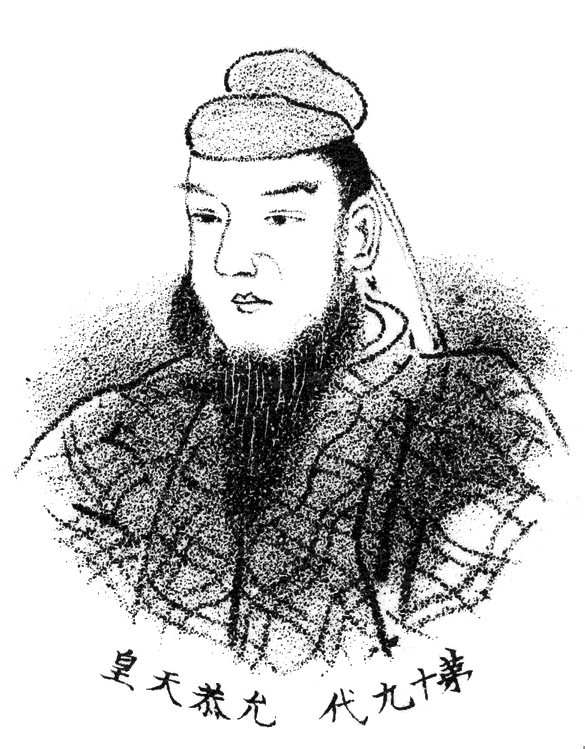Ancient roots and mystical origins of kombucha
From 220 B.C. to 2023 A.D. and beyond. Amongst kombucha's history there are facts and legends, and the line between the two isn't exactly straight and fine or easy to determine. With its (likely) roots in Northeast China around 220 B.C. you could say this drink has been around the block a few times. As one the stories goes, and there are a few out there, the name kombucha is derrived from Dr. Kombu, a Korean physician who introduced the fermented tea to Japan as a medicine for Emperor Ingyo. From there it was introduced to several other countries as a result of trade routes, likely the Silk Road. Amongst the legends, we might never know the identify of the first fermentor, but we can theorize with a high probability that it was somehwere in China for a few key reasons.

Traditional Chinese Medicine, which is more than 5000 years old(!) finds use for nearly every plant in nature, it would stand to reasoning that they "discovered" kombucha first. The Chinese are famous for their quest for longevity elixirs and were the first to ferment cabbage (which is very healthful). In the 1960's, during the Cultural Revolution in China, Kombucha could be found in just about every single household and it had an array of aliases like “Sea Treasure” (海寶) “haibao” or “haipao”, “Stomach Treasure” (胃寶) “weibao” or “weipao” and “Sea Mushroom”(海蘑菇) “haimogu”. Several research studies can be found in China from the 1980’s that indicate it’s primary benefit was for improving digestion.
Throughout history there are many instances of "fermented vingegary beverages" in various places. One such occurrence is from the flasks of Genghis Khan and his armies as they conquered a very lage part of Asia around 1200 B.C. At the same time there are stories told of Japanese samurai warriors that carried inside their wine skin a fermented elixir that was reported to give them energy. Around this point the trail seems to go dark for several hundreds of years, but soon events would occur to bring people from across the globe to the same region - the Opium Wars.
Without getting into many of the details that aren't pertinent to the topic of kombucha, the Opium Wars brought together armies from the Chinese, Korean, Japanese and Russian forces to battle for influence over land. Inevitably having these groups together resulted in the exchange of many cultural elements; the one we care about here being the fermentation process and culture. There soon began a large scientific push by German doctors, working the Russian camps, to begin to understand the unique elements at play during fermentation. It wasn't long after that scientific records begin popping up in Russia, the earliest known record being written by A.A. Bachinskaya in 1913. In the early 20th century, Bachinskaya collected samples of SCOBY's from across Russia to study the yeast and bacteria that comprise the “mushroom.”
In Russia, the SCOBY is called “čajnyj grib” (literally “tea mushroom”), while the beverage itself is known as “grib” (“mushroom” or affectionately “gribok” – “little mushroom”) or “tea kvass”. Dr. Rudolf Sklenar witnessed a Russian peasant use Kombucha to help injured soldiers in WWI and subsequently brought the culture back to his native homeland, Germany, where kombucha was used in a specific protocol to heal cancer patients. Throughout the 1920's and 1930's there are hundreds of hundreds of studies conducted, many of which focused on improvements in digestion and diabetes. Kombucha was extremely popular in Russia and Europe - until WWII. During this time sugar and tea were rationed, and being as they are two of the main ingredients, it's easy to see why there was a dip in the number of homes brewing their own elixir of life. Fortunately there were enough people that were able to preseve the tradition and the war and rations eventaually came to an end.
Another legend of the kombucha culture comes from Russia during the 1980's from towns and residents near the Chernobyl meltdown. The effects of radiation are horrific and awful for any living being within it's reach. However, nurses and doctors began to notice there were a group of people seemingly less affected than the rest of the population; many of whom were elderly women. After tracing back their common habits/dietary patterns/etc. they concluded that the common thread between this group was that they regularly consumed kombucha. While this can't exactly be confirmed or disproven, there are more recent scientific studies that have proven very interesting. One study from 2008 showed that rats with livers damaged by irradiation or exposure to harmful chemicals had improved function after consuming kombucha. A follow up study found that kombucha does provide a “radioprotective effect against ionizing radiation.” It’s important to note that increased dosages provided increased protection.